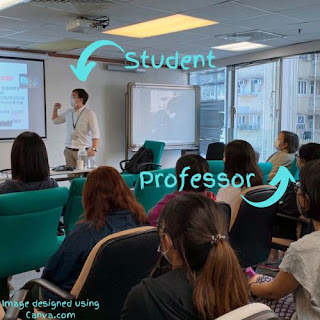The answer is simple: Give the maximum number of assignments for which you are willing to give meaningful and individualized feedback. Everything else is busywork and can be dropped.
Giving students feedback isn't just a show of how engaged you are as the teacher. Feedback is essential to correcting, challenging, and otherwise facilitating learning for your students.
An Equation for How To Decide
- Decide how much time you have to devote to a given class above and beyond the periods you are already scheduled to meet.
- Decide how much time it is going to take to give feedback to everyone on a single assignment.
- Divide the answer in #1 to the answer in #2
For example, I am teaching three online courses and leading a research institute this summer. It's an unusually busy semester for me. But I sort of cheated, like I'm sure many of you do. I spent three weeks before the summer term began recording hundreds of lectures. That means I don't have to "lecture" (or create activities) each week. I am free to give feedback instead.
Now I tend to work best at around 20 hours per week. This leaves time for writing, reading, and the pursuit of other interests. The research institute requires about 10hrs a week of dedicated attention.
20hrs - 10hrs =10 hrs per week available to give feedback
My available 10hrs has to be divided between three courses: PSYC 1101, PSYC 2103, and EDUC 5592. These courses are all filled to capacity, so I have 95 students combined across all three courses. Just doing some basic napkin math, I have 80 hours over the entire summer, which means less than 1 hour per student. I'll call it 40 minutes per student, because the online system is a bit wonky and slow-moving. (I have to click like five links just to open a student assignment.)
It takes me about five minutes to read a short essay and give some personalized feedback for each student. This means I can reasonably give FOUR ASSIGNMENTS for EACH CLASS. That's assuming everything goes as planned.
Changes to Consider
Not all courses are the same. I have high expectations for my graduate students, and to support them I promise to give them a lot more nuanced and detailed feedback. In this particular class (Applied Research), I was asking them to design their own teaching intervention and assessment strategy for its effectiveness. I decided that that would require at LEAST five separate parts, and some students would need to submit 4-5 drafts for my feedback. That means as many as 20 assignments for feedback from each student. Some students would need a lot of attention, and others very little. (About three were excellent and needed advanced recommendations and suggestions; about five were so weak that the feedback was rather simplistic; the rest all required nuanced analyses and feedback.)
To create space for all of this feedback, I decided to give ZERO feedback-based activities in my 1101 class and only FOUR feedback-based activities in the 2103 class. (I ended up reducing the requirement in 2103 to TWO because the course was overbooked.)
Tricks to Maximize Feedback Availability and Time Expenditure
I give no compulsory discussion assignments in online courses. Discussions are always optional. This prevents me from spending time giving feedback to someone who was only doing an assignment because they had to (and don't plan on reading any feedback). No shade intended. I was that student in college. Only about 5% of students in a 1000-level course complete optional discussion activities. That means I can give detailed and personalized feedback to EVERYONE who wants it at little time expense.
In advanced classes, and especially when discussion activities are based on the sort of work students are expected to do later for a grade, participation in optional discussion forums goes up to around 60% in my experience. That's a lot of feedback, but I conduct this interaction publicly in the discussion forum in our LMS. That way conscientious students can learn from each other and their mistakes.
If students are working on mastering a skill, such as Cultural Self-Awareness, which is one of our Global Learning Objectives, then I can sometimes give feedback to lots of students at once. I might recognize a common mistake occurring again and again across students. I can record a video or write a short essay, which I can then link as my response to an individual student (or address to the entire class). Students tend to think I've made it just for them, because it specifically addresses a shortcoming they're noticing in their work.

Comments
Post a Comment